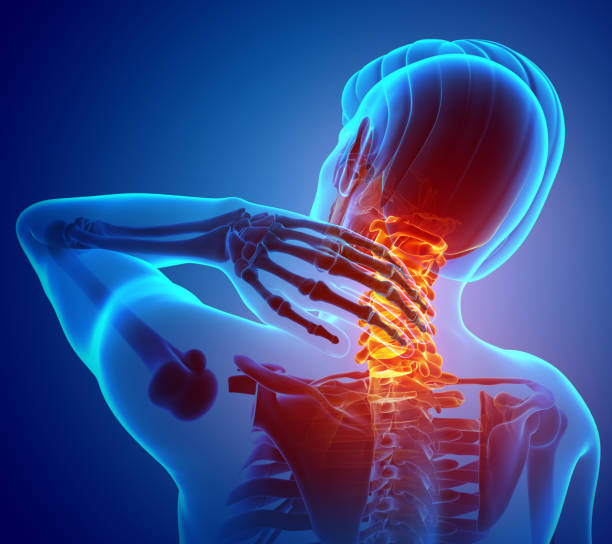Car accidents can be incredibly jarring and cause significant damage to both vehicles and, more importantly, the people involved. While some accidents result in only minor injuries, others can lead to more severe consequences that may not become evident until days or even weeks after the incident.
Among the most common injuries reported after vehicle accidents are those related to the neck and back, which can cause substantial pain and discomfort. Understanding these injuries and seeking proper medical attention promptly is crucial for effective recovery.
Types of Neck and Back Injuries
- Whiplash: Whiplash is one of the most common neck injuries caused by vehicle accidents. It occurs when the head is suddenly jerked forward and then backward, causing strain to the muscles and ligaments in the neck. Whiplash can lead to symptoms such as neck pain, stiffness, headaches, dizziness, and blurred vision.
- Sprains and Strains: The force of impact during a car collision can also cause sprains and strains in the neck and back. Sprains involve the stretching or tearing of ligaments, while strains occur when muscles or tendons are stretched or torn. These injuries can result in pain, swelling, and limited range of motion.
- Herniated Discs: In more severe cases, the impact of a car accident can cause the discs between the vertebrae in the spine to herniate or bulge. This condition puts pressure on the nerves in the spinal cord, leading to pain, numbness, and weakness in the arms or legs.
Symptoms and Warning Signs
After a car accident, it is essential to pay attention to any symptoms or warning signs that may indicate a neck or back injury. In some cases, these symptoms may not appear immediately, and it is common for individuals to feel relatively fine immediately after the accident. However, within a few hours or days, they may begin to experience pain, stiffness, or discomfort in the neck or back. Other warning signs may include headaches, difficulty concentrating, or changes in mood or behavior.
Seeking Medical Attention
Even if the initial symptoms seem mild, seeking medical attention promptly after a car accident is crucial. A healthcare professional can assess the extent of the injuries and recommend appropriate treatment. They may conduct physical examinations, order imaging tests like X-rays or MRI scans, and develop a personalized treatment plan based on the specific injuries.
Long-Term Effects and Complications
Neck and back injuries can have significant long-term effects and complications if left untreated. Chronic pain and discomfort may persist, impacting an individual’s daily activities and overall quality of life. In severe cases, untreated injuries can lead to long-term disability, affecting one’s ability to work, engage in physical activities, or even enjoy hobbies and social interactions.
Medical Diagnosis and Treatment
The diagnosis of neck and back injuries typically involves a combination of physical examination, medical history review, and imaging tests. Based on the findings, treatment options can vary. For minor injuries like sprains or strains, conservative treatments such as rest, ice, heat therapy, and over-the-counter pain medications may suffice. However, more severe injuries like herniated discs may require more advanced treatments, including physical therapy, chiropractic care, or in some cases, surgical intervention.
Rehabilitation and Physical Therapy
Physical therapy plays a crucial role in recovering from neck and back injuries. A qualified physical therapist can design a customized rehabilitation program that includes exercises and techniques to improve mobility, flexibility, and strength in the affected areas. Physical therapy also helps prevent future complications and promotes faster and more effective recovery.
In cases of whiplash or other neck injuries, chiropractic care in Salt Lake City can also be a beneficial part of the rehabilitation process. Chiropractors are trained to identify misalignments in the spine and can use adjustments and manipulations to realign the vertebrae, reducing pain and improving mobility. Chiropractic care can work in conjunction with physical therapy to provide comprehensive care and promote healing after a car accident.
Many individuals find that a combination of physical therapy and chiropractic care helps them recover more quickly and achieve better overall outcomes. As always, it’s essential to work with healthcare professionals who specialize in treating car accident injuries and have experience in providing care for whiplash and other neck and back injuries.
Coping with Emotional and Psychological Impact
In addition to physical injuries, car accidents can have a significant emotional and psychological impact on individuals. Experiencing a traumatic event like a collision can lead to feelings of anxiety, fear, or even post-traumatic stress disorder (PTSD). Seeking support from loved ones or mental health professionals is essential to cope with the emotional aftermath of a car accident.
Legal Considerations
If the car accident was a result of someone else’s negligence, it may be important to explore legal options for seeking compensation for medical expenses, pain and suffering, lost wages, and other damages. Working with an experienced personal injury attorney can help navigate the legal process and protect the injured person’s rights.
Preventive Measures
While accidents can happen unexpectedly, there are preventive measures that drivers can take to reduce the risk of neck and back injuries in car accidents. These include properly adjusting car seats and headrests, using seat belts, and practicing defensive driving techniques.
Conclusion
Neck and back injuries are common after car accidents and can cause significant pain and discomfort. It is crucial to recognize the symptoms and seek medical attention promptly for proper diagnosis and treatment. Physical therapy and rehabilitation can play a vital role in the recovery process, helping individuals regain mobility and function. Additionally, seeking emotional support and considering legal options, if applicable, can aid in coping with the aftermath of a car accident and securing necessary compensation. Ultimately, taking preventive measures and prioritizing safety while driving can help reduce the risk of severe injuries in car collisions.









